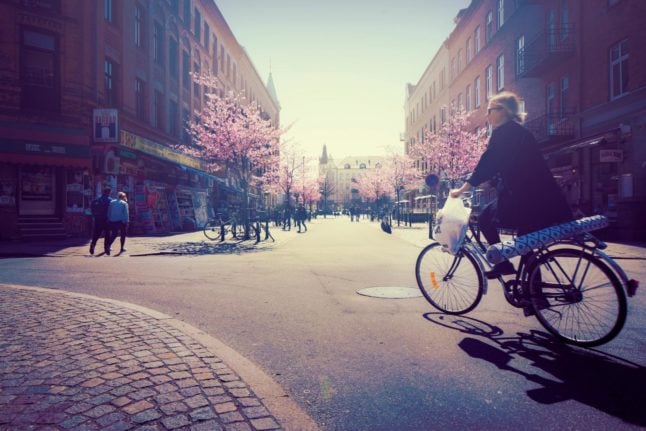The Local’s guide to tipping in Sweden is clear: tip for good service if you want to, but don’t feel the pressure: where servers in the US, for instance, rely on tips to live, waiters in Sweden have collectively bargained salaries with long vacations and generous benefits.
- SEE ALSO: What’s the tipping etiquette in Sweden?
But there are signs that this is changing, and the change is being accelerated by card machines. Now, many machines offer three preset gratuity percentages, usually starting with five percent and going up to fifteen or twenty. Previously they just asked the customer to fill in the total amount they wanted to pay.
This subtle change to a user interface sends a not-so-subtle message to customers: that tipping is expected and that most people are probably doing it. The button for not tipping is either a large-lettered ‘No Tip’ or a more subtle ‘Fortsätt’ or ‘Continue’ (it turns out you can continue without selecting a tip amount, but it’s not immediately clear to the user).
I’ll confess, when I was first presented with this I was mildly irked: I usually tip if I’ve had table service, but waiting staff are treated as professionals and paid properly, guaranteed by deals with unions; menu prices are correspondingly high. The tip was a genuine token of appreciation.
But when I tweeted something to this effect (a tweet that went strangely viral), the responses I got made me think. Many people pointed out that the restaurant trade in Sweden is under enormous pressure, with rising costs, the after-effects of Covid and difficulties recruiting. And as Sweden has become more cosmopolitain, adding ten percent to the bill comes naturally to many.
Boulebar, a restaurant and bar chain with branches around Sweden and Denmark, had a longstanding policy of not accepting tips at all, reasoning that they were outdated and put diners in an uncomfortable position. But in 2021 CEO Henrik Kruse decided to change tack:
“It was a purely financial decision. We were under pressure due to Covid, and we had to keep wages down, so bringing back tips was the solution,” he said, adding that he has a collective agreement and staff also get a union bargained salary, before tips.
Yet for Kruse the new machines, with their pre-set tipping percentages, take things too far:
“We don’t use it, because it makes it even clearer that you’re asking for money. The guest should feel free not to tip. It’s more important for us that the guest feels free to tell people they’re satisfied.”
But for those restaurants that have adopted the new interfaces, the effect has been dramatic. Card processing company Kassacentralen, which was one of the first to launch this feature in Sweden, told Svenska Dagbladet this week that the feature had led to tips for the average establishment doubling, with some places seeing them rise six-fold.
Even unions are relaxed about tipping these days, perhaps understanding that they’re a significant extra income for their members. Union representatives have often in the past spoken out against tipping, arguing that the practice is demeaning to staff and that tips were spread unevenly, with staff in cafés or fast food joints getting nothing at all. But when I called the Swedish Hotel and Restaurant Union (HRF), a spokesman said that the union had no view on the practice, and it was a matter for staff, business owners and customers to decide.
So is tipping now expected in Sweden? The old advice probably still stands; waiters are still not as reliant on tips as staff in many other countries, so a lavish tip is not necessary. But as Swedes start to tip more generously, you might stick out if you leave nothing at all.



 Please whitelist us to continue reading.
Please whitelist us to continue reading.
I think going outside in Sweden is really expensive, and usually I decide to eat and drink at home. even though I understand restaurant, I will think more to my wallet availability before going outside for dinner… that’s necessary from customer side too!